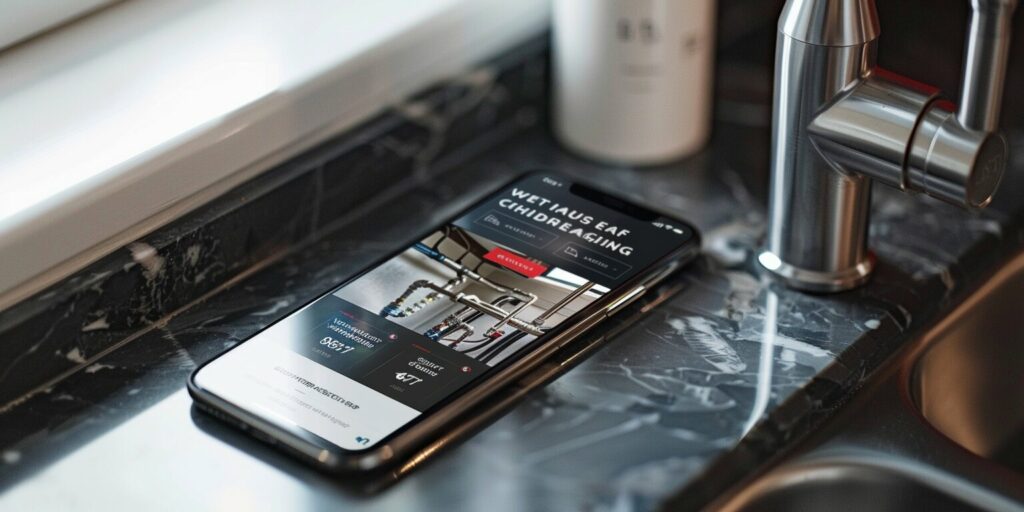Are you a plumber looking to expand your business’s customer base? Look no further than Google Ads. With the power of targeted advertising, Google Ads for plumbers have the potential to generate leads and convert them into paying customers. This article will explore how you can make the most out of Google Ads and boost your plumbing business’s success.
When it comes to plumber ads, Google Ads is a game-changer. By capitalizing on the vast reach of the Google search engine, you can effectively target potential customers actively seeking plumbing services. Whether you’re a small, local plumbing company or a larger operation, harnessing the power of Google Ads can take your business to new heights. So, let’s dive in and discover how Google AdWords for plumbers and plumbing PPC marketing can transform clicks into customers.
Understanding Google Ads for Plumbers
Google Ads for plumbers: an indispensable tool for driving targeted traffic and generating leads for your plumbing company. This section will delve into the basics of Google Ads, exploring what they are, how they work, and why they benefit plumbers.
Google Ads, previously known as Google AdWords, is an online advertising platform that allows businesses to create and display ads on Google’s search engine results pages. These ads appear at the top and bottom of search results when users search for relevant keywords, offering prime visibility and the potential to attract more clicks and customers.
Plumbing ads through Google Ads are highly targeted, allowing you to reach potential customers precisely when they are searching for plumbing services in your area. By bidding on relevant keywords such as ‘plumber in [City] or ’emergency plumbing services,’ you can position your ads in front of your ideal audience, increasing the chances of conversion.
One key benefit of using Google Ads for plumbers is setting a budget and paying only when someone clicks on your ad. This pay-per-click (PPC) model ensures you only pay for genuine interest, optimizing your advertising spend and maximizing return on investment (ROI).

How Google Ads Work for Plumbers
- Keyword targeting: Selecting relevant keywords that potential customers might use when searching for plumbing services in your area.
- Ad creation: Crafting compelling ad copy that grabs attention and entices users to click.
- Bidding: Setting bids for your chosen keywords and determining how much you are willing to pay for each click.
- Ad ranking: Google determines the relevance and quality of your ads and assigns them a rank on the search engine results pages.
- Ad display: If your ad ranks high enough, it will appear in the sponsored ad section on Google’s search results page.
- Performance tracking: Monitoring the performance of your ads, measuring clicks, impressions, conversions, and other key metrics.
With Google Ads, you have full control over your campaigns, enabling you to optimize and refine your ads over time. By continuously analyzing and adjusting your targeting, ad copy, and bidding strategy, you can improve the effectiveness of your plumbing ads and drive more qualified leads to your business.
Creating Compelling Plumbing Ads
When it comes to advertising for plumbers, creating compelling ads is crucial to capture the attention of potential customers and maximize conversions. To craft effective plumbing ads, it’s important to understand the key elements that make them stand out.
Ad Copywriting
The first step in creating compelling plumbing ads is focusing on ad copywriting. Write clear and concise ad copy highlighting your plumbing services’ unique features and benefits. Use persuasive language and include a strong call to action to encourage potential customers to take action.
Ad Extensions
Utilizing ad extensions can enhance the visibility and effectiveness of your plumbing ads. Consider including extensions such as sitelink extensions, call extensions, and location extensions to provide additional information and options for potential customers to engage with your business.
Optimizing Ads for Conversions
Optimizing your plumbing ads is important to maximize conversions. Conduct thorough keyword research and choose relevant keywords that align with the intent of your target audience. Craft compelling headlines and utilize ad formats that grab attention, such as responsive search or image ads, depending on your platform.
Test different variations of your ad copy and ad extensions to identify what resonates best with your target audience. Monitor the performance of your ads regularly and make data-driven decisions to improve and refine your advertising strategy continuously.
By focusing on ad copywriting, utilizing ad extensions, and optimizing your ads for conversions, you can create compelling plumbing ads that effectively capture the attention of potential customers and drive them to take action.
PPC for Plumbing Companies: Targeting the Right Audience
In today’s competitive digital landscape, pay-per-click (PPC) advertising has become essential for plumbing companies to reach their target audience effectively. By implementing the right PPC strategies, you can ensure that your ads are seen by potential customers who are actively searching for plumbing services.

Setting up Effective Campaigns
Creating a successful PPC campaign starts with a strong foundation. Begin by clearly defining your campaign goals and objectives. Are you looking to generate leads, increase website traffic, or boost brand awareness? Once you have a clear understanding of your goals, you can then structure your campaigns accordingly.
When setting up your PPC for plumber campaigns, choosing the right keywords that relate directly to your plumbing services is crucial. Conduct keyword research to identify the terms and phrases your target audience uses when searching for plumbing solutions. This will help ensure that your ads are displayed to the right people at the right time.
Selecting Relevant Keywords
Selecting relevant keywords is key to reaching your intended audience. Include keywords that relate to your plumbing business, such as “emergency plumber,” “plumbing repair,” or “leaky pipes.” Using specific keywords can narrow your audience and increase the chances of attracting potential customers actively seeking plumbing services.
Consider using long-tail keywords, which are more specific phrases that potential customers may use when searching for plumbing solutions. For example, “24-hour emergency plumber in [your city]” or “affordable plumbing services near me.” These keywords help you target a more refined audience and increase the likelihood of conversions.
Optimizing Your Ad Targeting
Another important aspect of PPC strategies is optimizing your ad targeting. Pay attention to demographic factors such as location, age, and gender to ensure your ads are displayed to the right audience. For instance, if your plumbing business serves a specific city or region, you can target your ads to appear only to individuals in that area.
In addition to demographic targeting, consider using ad extensions to provide potential customers with relevant information such as your phone number, location, or user reviews. These extensions help increase the visibility and credibility of your ads, ultimately leading to higher click-through rates and conversions.
- 👉 Tip: Continuously monitor the performance of your PPC campaigns and make adjustments as needed. Analyze data such as click-through rates, conversion rates, and cost per click to identify areas for improvement and optimize your targeting strategies.
- 👉 Tip: Experiment with different ad formats, such as text ads, image ads, or video ads, to see which resonates best with your target audience.
By effectively leveraging PPC strategies, you can ensure that your plumbing business reaches the right audience and generates quality leads. Invest time into targeted campaign setup, keyword selection, and ad optimization to maximize the impact of your PPC efforts and drive business growth.
Maximizing ROI with Conversion Tracking
Tracking conversions in your Google Ads campaigns is essential for measuring your return on investment (ROI) and optimizing your plumbing business’s marketing efforts. By understanding which ads and keywords drive conversions, you can make data-driven decisions to improve your campaign’s effectiveness and maximize your ROI.
Why Conversion Tracking Matters
Conversion tracking lets you see users’ actions on your website after clicking on your Google Ads. It provides valuable insights into the performance of your ads, helping you identify what leads to customer inquiries, quote requests, or actual purchases. With this information, you can allocate your budget more effectively and focus on the strategies that bring the most conversions.
Different Conversion Tracking Methods
Google Ads offers multiple ways to track conversions based on your business goals. The most common methods include:
- Website Actions: Track conversions such as form submissions, newsletter sign-ups, or online purchases directly on your website.
- Phone Calls: Measure conversions that occur when someone calls your plumbing business after clicking on your ads. Use call tracking software or Google forwarding numbers to attribute these conversions to your Google Ads campaigns.
- App Installations: Track conversions when users download and install your plumbing business’s mobile app.
- Offline Actions: Track offline conversions, such as in-store purchases or service bookings. Use import data or offline conversion tracking to connect these actions to your online ads.
Effective Analysis and Optimization
Once you have implemented conversion tracking, analyzing the data and optimizing your campaigns is crucial. Consider the following strategies:
- Identify top-performing ads and keywords: Review conversion data to identify ads and keywords generating the most conversions at a reasonable cost. Allocate more budget to these top performers to maximize results.
- A/B testing: Experiment with different ad variations and landing pages to determine which combinations yield the highest conversion rates. Test elements like headlines, call-to-action buttons, and visual content to optimize your campaigns.
- Refine targeting: Analyze conversion data to refine your audience targeting. Identify characteristics of customers who convert and adjust your targeting parameters accordingly to reach similar prospects.
- Landing page optimization: Use conversion tracking data to improve your landing pages. Identify areas where users drop off or encounter obstacles in the conversion process and make optimizations to boost conversion rates.
By consistently monitoring and optimizing your Google Ads campaigns based on conversion tracking data, you can refine your strategies and drive higher ROI for your plumbing business. Conversion tracking empowers you to make evidence-based decisions that lead to more customer inquiries, appointments, and revenue.
Localizing Your Google Ads for Plumbing Services
As a plumber, you understand the importance of targeting your services to specific geographical areas. Local advertising can be a powerful tool for attracting customers needing your plumbing expertise. By leveraging Google Ads’ potential, you can effectively localize your marketing efforts and connect with potential clients in your area.
Targeting Specific Geographical Areas
One of Google Ads’ key advantages is the ability to target specific geographical areas. This feature ensures that potential customers see your ads within your service area. By focusing your advertising efforts on the areas where you operate, you can maximize your marketing budget and generate leads from the right audience.
Utilizing Location Extensions
Location extensions are powerful tools for further enhancing your local advertising strategy. By adding location extensions to your Google Ads, you can display your business address, phone number, and other relevant information directly in your ads. This increases your ad’s visibility and provides potential customers with convenient access to your contact details, making it easier for them to reach out to you.
Leveraging Other Local Marketing Tactics
In addition to Google Ads, you can utilize local marketing tactics to promote your plumbing services further. These may include local directories, online listings, and community partnerships. By combining these tactics with your Google Ads campaigns, you can create a strong local presence and establish your plumbing business as the go-to choice for customers in your area.
Optimizing Landing Pages for Higher Conversions
Optimizing your landing pages is crucial to running successful Google Ads campaigns for plumbing advertising. Your landing page is where potential customers land after clicking on your ad, and you can convert those clicks into valuable leads. To maximize conversions, you must create landing pages that align with your Google Ads campaigns, optimize for mobile devices, and utilize persuasive elements that encourage action.
Create Relevant and Compelling Content
- Match your ad copy to your landing page: Ensure that the messaging and keywords in your ad are consistent with the content of your landing page. This creates a seamless customer experience and reinforces your value proposition.
- Highlight benefits and unique selling points: Clearly communicate your plumbing services’ benefits and unique features. Identify how you can solve your customers’ problems and why they should choose you over your competitors.
- Keep the layout clean and focused: Avoid clutter and distractions on your landing page. Use clear headings, bullet points, and compelling visuals to guide visitors’ attention to the key information and call to action.
Optimize for Mobile Devices
With the increasing number of users accessing the internet on mobile devices, optimizing your landing pages for mobile responsiveness is essential. Mobile optimization ensures that your landing page is properly displayed and easily navigable on smartphones and tablets, providing a positive user experience.

Here are some tips:
- Use a responsive design: Create a landing page that adapts seamlessly to different screen sizes and resolutions. This ensures that your content is legible and accessible on any device.
- Minimize loading times: Optimize your images and reduce unnecessary code to improve loading speed. Visitors are more likely to bounce if your landing page takes too long to load.
- Simplify forms: Mobile users are less likely to fill out lengthy forms. To encourage higher conversion rates, simplify your lead capture process by only requesting essential information.
Utilize Persuasive Elements to Encourage Action
To drive conversions on your landing pages, it’s essential to employ persuasive elements that encourage visitors to take action. Here are some tactics you can use:
- Add clear and compelling call-to-action buttons: Use action-oriented language and make your call-to-action buttons stand out. Whether it’s “Get a Quote,” “Schedule an Appointment,” or “Call Now,” your buttons should be visually appealing and clearly communicate the next step.
- Utilize social proof: Incorporate testimonials, reviews, and case studies to enhance credibility and trustworthiness. Showcasing positive customer experiences can significantly influence potential customers and increase conversion rates.
- Create a sense of urgency: Use limited-time offers, countdown timers, or exclusive discounts to create a sense of urgency. Encouraging visitors to take immediate action can boost conversions.
By optimizing your landing pages to align with your Google Ads campaigns, catering to mobile users, and utilizing persuasive elements, you can increase your conversion rates and drive more valuable leads for your plumbing business.
Budgeting and Bidding Strategies for Plumbing Ads
Effective budgeting and bidding strategies are crucial when running successful Google Ads campaigns for your plumbing business. By optimizing your budget and adjusting keyword bids, you can maximize your ad spend and achieve better results. Here are some key strategies to consider:
- Set Realistic Budgets: Before starting your ad campaigns, it’s essential to determine a realistic budget that aligns with your marketing goals. Consider factors such as your overall marketing budget, cost per click (CPC) in the plumbing industry, and desired return on investment (ROI). Setting a budget you can comfortably manage allows you to allocate funds strategically and avoid overspending.
- Optimize Keyword Bids: Understanding the value of different keywords is crucial for successful bidding. Conduct thorough keyword research to identify the most relevant and high-performing keywords in the plumbing industry. Adjust your bids based on the competitiveness and conversion potential of each keyword. You can increase your visibility and attract more qualified leads by bidding higher on valuable keywords.
- Use Ad Scheduling: Consider the times and days when your target audience is most likely to search for plumbing services. Use ad scheduling to adjust your bids accordingly, focusing your budget on times when potential customers are actively searching for your services. This strategy can help you optimize your budget by reaching prospects during prime times.
- Utilize Ad Extensions: Leverage ad extensions to improve your ads and capture greater interest. Features such as call extensions, sitelink extensions, and location extensions offer extra details and ways for prospective customers to interact with your advertisements. By utilizing these extensions, you can improve the effectiveness of your ads and increase your chances of conversion.
- Focus on Quality Score: Google’s Quality Score significantly determines your ad position and cost per click. Aim to create high-quality ads with relevant keywords and landing pages. High-quality ads typically achieve better positions and lower costs per click, allowing you to get more clicks within your allocated budget.
By implementing these budgeting and bidding strategies, you can optimize your Google Ads campaigns for maximum return on investment. Continuously monitor and analyze your campaigns’ performance, making data-driven decisions to improve their effectiveness over time. With the right strategies, you can drive more targeted traffic to your plumbing business and convert clicks into customers.
Monitoring and Analyzing Google Ads Performance
As with any marketing campaign, it is crucial to continuously monitor and analyze the performance of your Google Ads for plumbing. This continuous oversight ensures that your advertisements achieve their desired outcomes and enables you to make informed choices to enhance their impact.
Key Metrics to Track
When monitoring your Google Ads performance, you should pay close attention to several key metrics. These metrics provide valuable insights into the success of your campaigns and can help you identify areas for improvement.
- Click-Through Rate (CTR): This metric evaluates the frequency with which people click on your advertisements relative to the number of times your ads are shown. A higher click-through rate suggests that your advertisements effectively engage your intended audience.
- Conversion Rate: The conversion rate calculates the proportion of users who complete a specific action, like submitting a contact form or initiating a phone call. A higher conversion rate signifies that your advertisements successfully prompt users to convert.
- Cost-Per-Click (CPC): CPC calculates the cost incurred each time someone clicks on your advertisements. Monitoring your CPC can help you optimize your budget and ensure you get the most value for your advertising spend.
- Return on Investment (ROI): ROI calculates the revenue generated from your ads compared to the cost of running them. Tracking ROI can help you determine the profitability of your campaigns and guide your future advertising decisions.
Utilizing Google Analytics
Google Analytics is a powerful tool that can provide deeper insights into the performance of your Google Ads campaigns. You can track user behavior, website traffic, and conversion data by integrating Google Analytics with your ads account.
With Google Analytics, you can:
- Monitor the behavior of users who clicked on your ads, including the pages they visited and how long they stayed on your site.
- Track the traffic sources to your website and identify which channels drive the most conversions.
- Set up goals and track specific actions on your website, such as form submissions or purchases.
- Segment your data to gain insights into different audience groups and their behavior.
Making Data-Driven Decisions
By regularly monitoring and analyzing your Google Ads’ performance, you can make data-driven decisions to improve your campaigns. Use the insights gained from tracking key metrics and Google Analytics to identify areas for improvement and test new strategies.
Some actionable steps you can take include:
- Adjusting your ad copy to improve click-through rates and conversions.
- Optimizing your landing pages to provide a seamless user experience and encourage conversions.
- Experimenting with different bidding strategies to maximize your budget and ad visibility.
- Refining your target audience by adjusting your targeting settings and utilizing remarketing.
By proactively monitoring and analyzing your Google Ads performance, you can continuously optimize your campaigns and achieve better results for your plumbing business.
Conclusion
Throughout this article, we have explored the power of Google Ads for plumbers and how they can transform clicks into customers. By understanding the basics of Google Ads for plumbers, creating compelling plumbing ads, and targeting the right audience with PPC strategies, you can effectively generate leads for your plumbing business.
Tracking conversions and analyzing performance is essential to maximizing the success of your Google Ads campaigns. You can make data-driven decisions to optimize your ads and achieve better results by implementing conversion tracking methods and continuously monitoring your campaigns.
Localizing your Google Ads and optimizing landing pages are crucial to attracting local customers and increasing conversions. By targeting specific geographical areas and creating persuasive landing pages, you can enhance the effectiveness of your campaigns.
Finally, budgeting and bidding strategies are vital in maximizing your ad budget and driving revenue. By setting realistic budgets, adjusting keyword bids, and continuously optimizing your campaigns, you can generate more leads and achieve a higher return on investment (ROI).
In conclusion, by leveraging the benefits of Google Ads for plumbers and implementing effective strategies, you can transform clicks into customers and boost the success of your plumbing business. Remember to continuously optimize your campaigns and analyze performance to generate more leads and drive revenue.





